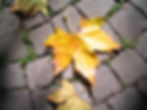



Call Us Now (717) 443-7049
Digger's Landscaping Inc.


Quality landscaping
Landscape planning is like a wide-angle lens taking in all your territory and even the borrowed view beyond the hedge. Landscaping requires study and observation. It is not the same in different parts of the world. Landscaping varies according to different regions. Therefore normally local natural experts are recommended if it is done for the first time. Understanding of the site is one of the chief essentials for successful landscaping. Different natural features like terrain, topography, soil qualities, prevailing winds, depth of the frost line, and the system of native flora and fauna must be taken into account. Sometimes the land is not fit for landscaping. In order to landscape it, the land must be graded. Once the basic planning and designing are in tact, an array of finishing touches can be added to your landscape to make it truly yours. As your landscape is very much part of your home, there is no reason why you shouldn't decorate it in much the same way as the inside of your home. Plants are added to increase the appeal of your area. The placement of the plants is probably the element which makes your landscape appealing otherwise. Tastes in landscaping styles vary as much as in other aspects of living, and what appeals to one person may not appeal to another, but the test of a good design is whether it appeals to you. Digger's Landscaping is here to lift the lid on the magic box of imagination and inspiration!


Tools to get the job done
A landsaping or garden tool is any one of many tools made for landscape and gardening and overlaps with the range of tools made for agriculture and horticulture. Garden tools can also be hand tools and power tools.
The hand tools still used by landscapers originated with the earliest agricultural implements used by man: the spade, the garden hoe, the pitchfork, the garden fork, the garden rake, hand cultivator, spade, shovel, and trowel etc. The earliest tools were made of wood, flint, metal, tin, and bone.
The development of metal working, first in copper and later in iron and steel, enabled the manufacture of more durable tools. Industrial metalworking enabled the manufacture of cutting tools, including runing shears (secateurs) and grass shears.
The first power tool to become popular with gardeners was the lawn mower. This has been followed by a very wide range of power tools, including cultivators, string trimmers, irrigation sprinklers, hedge trimmers, lawn aerators, leaf sweepers, leaf blowers, chainsaws, and mini-tractors. In most third world countries they use a machete as a garden tool.

Latest Projects





